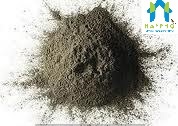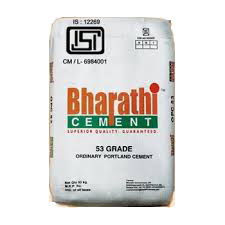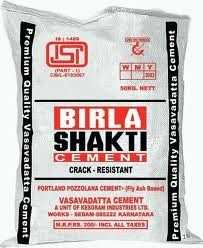Cement is one of the oldest building materials. The word “cement” is based on the Latin word “caementum”. It is a fine, soft, powdery-type substance. The powder is so fine it can pass through a sieve capable of holding water.

It is made from a mixture of elements that are found in natural materials such as limestone, clay, sand and/or shale.
When cement is mixed with water, it can bind sand and gravel individually or together and get harden even in water.
- Cement mixed with water, sand and gravel/stone chips – Concrete.
- Cement mixed with water and sand – Mortar/Plaster.
- Cement mixed with water – Paste/Grout
Cement can be purchased from most building supply stores in 50 kilograms bags.
Cement is usually gray also white cement can also be found.
How is Cement Manufactured?
Cement is manufactured through a closely controlled chemical combination of calcium, silicon, aluminum, iron and other ingredients present in natural materials such as limestone, clay, sand and/or shale.
Natural raw materials used to manufacture cement include limestone, shells, and chalk or marble combined with shale, soil, slate, blast furnace slag, silica sand and iron ore, in different proportion and percentage combination as per their individual properties. These ingredients, when heated at high temperatures (1400 °C – 1500 °C) form Portland cement clinker, a dark grey nodular material. These nodules are ground up to a fine powder to produce cement, a small amount of gypsum added to control its setting properties.
Cement plant laboratories check each step in the manufacture of Portland cement by regular chemical and physical tests. The labs also examine and test the finished product to ensure that it complies with all industry specifications.

How is Cement Batched?
The cement is generally packed in jute sacking bags, multi wall paper sacks and other packaging, marked with batch/control unit numbers in terms of Week, Month and year of packing 46 W 11M 2016
The average of the net quantity of cement packed in bags (sample size of a batch size of 100-150 bags is 20 bags) shall be equal or more than 50 kg.
5% of sample can weigh 2% less = 50 – 50*0.02 = 49 kgs.
None of the bag should weigh 4% less i.e. 50 – 50*0.04 = 48 kgs.
Note: The mass of jute sacking bag to hold 50 kg is 531 gms.
An individual bag of cement shall ideally weigh 50 + 0.531 = 50.531 kgs.
Types of Cement: Properties and their Uses
There are various categories of cement used in building works for various purposes. Thus, it is important to understand properties of each type of cement and their uses. There are commonly three types of cement used in general construction purposes i.e. Ordinary Portland Cement (43 Grade & 53 Grade), Portland Pozzolana Cement and Portland Slag Cement.
1. Ordinary Portland Cement
OPC is manufactured by grinding together OPC Clinker (95 – 97%) along with gypsum (3-5%). Ordinary Portland Cement (OPC) is graded according to their compressive strength. The grade indicates the minimum compression strength (MPa or N/mm2) of the cement that will attain after 28 days of setting.

Compression Strength:
OPC 43 Grade cement attains minimum compression strength of 43 MPa in 28 days of setting compared to 53 attained by 53 Grade cement.
Initial Strength:
53 Grade cement are used for fast paced construction were initial strength is to be achieved rapidly. 53 Grade cement has fast setting compared to 43 grade cement. 53 Grade attains a minimum strength of 27 MPa in 3 days compared to only 23 MPa by a 43 grade cement.
Uses & Application:
53 Grade OPC cement is Used in RCC, high strength pre-cast and pre-stressed concrete, concrete of higher grades, etc. where ever initial higher strength is the major structural requirement. 43 Grade OPC Cement are commonly used for plastering & masonry works, Non-RCC structures, pathways etc where initial days strength is not of prime importance. Even high strength pre-cast and pre-stressed concrete.
2. Portland Pozzolana Cement (PPC)
PPC is blended cement manufactured by grinding together OPC Clinker (63-83%) and fly ash (15-35%) along with gypsum (3-5%) or by intimately blending OPC and fly ash. Fly ash is a byproduct from burning pulverized coal in electric power generating plants. The percentage of fly ash in PPC permitted by BIS varies from 15 per cent (minimum) to 35 percent (maximum).

Compression Strength:
PPC need to attain minimum compression strength of 33 MPa in 28 days of setting compared to 53 attained by 53 Grade OPC cement. In PPC the development of strength at initial stages, between 1 to 7 days, is lower; PPC progressively improves and not only catches up with OPC in strength but also overtakes it during the life of the concrete. Hence durability is higher.
PPC improves the strength of concrete over a period of time (28 to 90 days and beyond) whereas OPC improves strength hardly beyond 28 days. As per the BIS, a minimum curing period of 10 days is prescribed for PPC and for OPC it is 7 days in dry and hot climates.
Uses & Application:
Useful for general construction works and especially suitable for Masonry, Plaster, Tiling works (initial strength not being a prime factor), it perform excellent in hostile environmental conditions like marine works being more resistance towards the attack of alkalies, sulphates, chlorides and other chemicals ,as the fly ash in PPC helps to improve the impermeability of concrete by converting Ca(OH)2 into calcium silicate hydrate (C-S-H) gels and make concrete denser .Also useful in mass concreting (such as dams, retaining walls, heavy foundations etc., as they have low heat of hydration ).
3. Portland Slag Cement (PSC)
Portland Slag Cement, commonly known as PSC, is also a kind of blended cement. It is manufactured by either inter-grinding or blending, OPC Clinker (35% – 50%),slag (45- 65% ) and gypsum (3-5%). Slag is by product of steel production, essentially, a non-metallic product comprising of more than 90% glass with silicates and alumino-silicates of lime. The percentage of slag in PSC permitted by BIS varies from 25 per cent (minimum) to 70 percent (maximum).

Compression Strength:
PSC need to attain minimum compression strength of 33 MPa in 28 days of setting compared to 53 attained by 53 Grade OPC cement. In PSC the development of strength at initial stages, between 1 to 7 days, is lower; PSC progressively improves and not only catches up with OPC in strength but also overtakes it during the life of the concrete. Hence durability is higher.
PSC improves the strength of concrete over a period of time (28 to 90 days and beyond) whereas OPC improves strength hardly beyond 28 days. As per the BIS, a minimum curing period of 10 days is prescribed for PSC and for OPC it is 7 days in dry and hot climates.
Uses & Application:
Useful for general construction works and especially suitable for Masonry, Plaster, Tiling works (strength not being a prime factor), it perform excellent in hostile environmental conditions like marine works being more resistance towards the attack of alkalies, sulphates, chlorides and other chemicals ,as the slag in PSC helps to improve the impermeability of concrete by converting Ca(OH)2 into calcium silicate hydrate (C-S-H) gels and make concrete denser .Also useful in mass concreting (such as dams, retaining walls, heavy foundations etc., as they have low heat of hydration ).
 (+91) 7249196273
(+91) 7249196273
